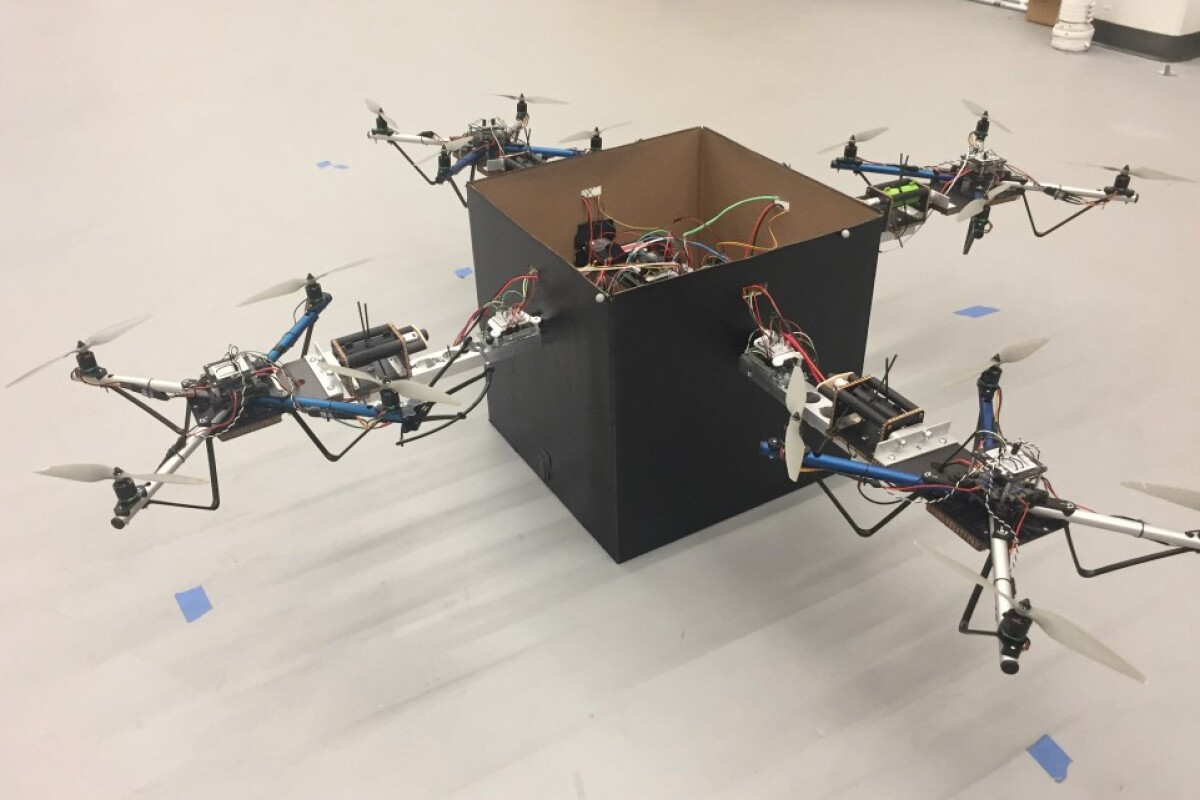While aerial drones do show promise as a means of urban parcel delivery, their small size will limit them to carrying relatively light packages. An experimental new system, however, lets multiple drones team up to hoist heftier items.
Currently in development at the Georgia Institute of Technology, the setup presently incorporates a 12-lb (5.4-kg) cargo box measuring 2 feet (61 cm) on each side. Built into that box is a docking structure that accommodates four small quadcopter drones – that said, the system could be scaled up for use with bigger boxes and larger numbers of the aircraft.
Once a package has been placed in the box, the drones simultaneously take off, proceeding to continuously communicate with one another while in autonomous flight. Doing so allows them to coordinate factors such as their thrust and orientation, so they're all flying together as one cohesive unit.
Plans call for the final version of the system to include infrared beacons on each of the docking stations, which would make it possible for the drones to automatically locate and latch onto them. This would come in particularly handy when the aircraft were picking up parcels from places like people's homes, where no trained staff were on hand to manually attach the drones.

And as an added bonus, by analyzing how much combined thrust was required to maintain a given altitude, the system could estimate the weight of the loads being carried.
It is hoped that once developed further, the setup will let delivery companies utilize fleets of drones of one standard size, instead of having to additionally invest in larger models for heavier cargo.
"A delivery truck could carry a dozen drones in the back, and depending on how heavy a particular package is, it might use as many as six drones to carry the package," says Assoc. Prof. Jonathan Rogers. "That would allow flexibility in the weight of the packages that could be delivered and eliminate the need to build and maintain several different sizes of delivery drones."
Source: Georgia Tech via Newswise






